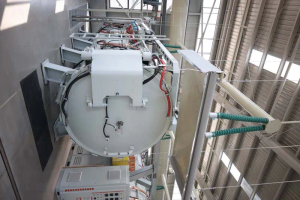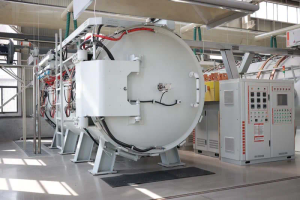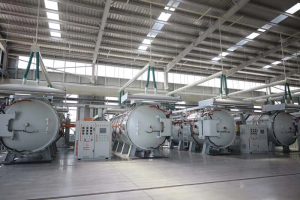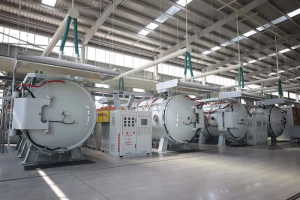Small Fragment DNA Extraction and Purification- Technical Difficulties and Solutions
Small fragment DNA extraction and purification is a critical step in various molecular biology applications, including cloning, sequencing, and gene expression analysis. While the process has become standardized over the years, it still presents a range of technical difficulties that can impact the quality and yield of extracted DNA. This article aims to explore these challenges in detail, while also providing solutions based on the latest research and practical experiences.
p The extraction of small fragment DNA often involves using different methodologies, including phenol-chloroform extraction, silica-based methods, and magnetic bead-based techniques. Each method has its own set of advantages and limitations. Understanding these intricacies is essential for optimizing the extraction and purification of small DNA fragments.
h2 Understanding Small Fragment DNA
p Small fragment DNA typically refers to DNA pieces that are less than 500 base pairs in length. These fragments can originate from various sources, including degraded genomic DNA, PCR products, or library preparations. The extraction and purification of these smaller fragments dna extraction reagent can pose unique challenges, primarily due to their size, which influences their interactions with various reagents and materials used during the process.
p One of the main difficulties in extracting small fragment DNA lies in the risk of losing these fragments during the purification process. Conventional methods may favor larger DNA magnetic beads cell isolation pieces, leading to a significant loss of the target small fragments. Therefore, adapting methods specifically designed to capture and retain small fragments is crucial.
h2 Technical Difficulties in Extraction
h3 Degradation of DNA
p One of the primary concerns when working with small fragment DNA is degradation. Environmental factors, such as exposure to heat, pH fluctuations, and physical shearing during handling, can lead to further fragmentation or complete degradation of the DNA. It is crucial to maintain optimal conditions throughout the extraction process to minimize these risks.
h3 Incomplete Lysis of Cells
![]()
p Another common issue is incomplete lysis of cells or tissues from which the DNA is extracted. If the cells are not lysed completely, the yield of DNA will be significantly reduced. This is particularly problematic when dealing with hard-to-lyse tissues, such as plant material or certain types of fungi. Utilizing more effective lysis buffers or mechanical disruption techniques can improve overall cell lysis efficiency.
![]()
h3 Contamination with Inhibitors
p Contaminants such as proteins, phenolic compounds, or polysaccharides can inhibit downstream applications like PCR or sequencing. These inhibitors often co-purify with the DNA, especially when using traditional extraction methods. Selecting purification techniques that effectively remove these contaminants without losing small DNA fragments is crucial for ensuring high-quality DNA.
h2 Solutions for Effective Extraction and Purification
h3 Optimizing Lysis Conditions
p To address the issue of incomplete cell lysis, researchers can optimize lysis conditions by adjusting buffer composition, incubation times, and temperatures. For instance, incorporating detergents that specifically target lipid membranes can enhance the lysis of tougher samples. Additionally, using mechanical methods such as bead beating can facilitate more effective disruption of cells.
h3 Using Specialized Kits
p Utilizing commercially available DNA extraction kits that are designed for small fragments can provide significant advantages. These kits often incorporate proprietary reagents and protocols that enhance the yield and purity of small DNA fragments. Many are optimized to reduce the loss of small fragments while effectively removing contaminants.
h3 Implementing Magnetic Bead-Based Methods
p Magnetic bead-based methods have gained popularity for small fragment DNA extraction due to their efficiency and simplicity. These methods rely on the binding of DNA to magnetic beads, allowing for easy separation from contaminants. The high surface area of the beads and their ability to selectively bind small fragments make them particularly advantageous for this purpose.
h2 Quality Assessment of Extracted DNA
p After extraction, assessing the quality and quantity of the isolated DNA is vital. Various techniques exist for this purpose, including spectrophotometry, fluorometry, and gel electrophoresis. Each of these methods provides different insights into the integrity and concentration of the DNA.
h3 Spectrophotometric Analysis
p Spectrophotometry is a quick and non-destructive method to assess DNA concentration and purity. By measuring absorbance at specific wavelengths, researchers can calculate the concentration of DNA in a sample and evaluate its purity based on the A260/A280 ratio. However, this method may not entirely reflect the presence of small fragments.
h3 Fluorometric Quantification
p Fluorometric assays offer a more sensitive approach to quantifying small DNA fragments. Using dyes that specifically bind to DNA allows for accurate measurement, even at low concentrations. This method is particularly useful for samples where traditional spectrophotometric measurements may fall short due to the small fragment size.
h3 Gel Electrophoresis
p Gel electrophoresis remains a gold standard for assessing the integrity of DNA. By running extracted DNA on an agarose gel, researchers can visualize the size distribution of DNA fragments. This technique provides a clear indication of whether small fragments were successfully extracted and preserved during purification.
h2 Conclusion
![]()
p The extraction and purification of small fragment DNA present numerous technical challenges that can affect downstream applications. By understanding the complexities of small DNA fragment handling and employing optimized techniques, researchers can improve the reliability and quality of their results. Continued advancements in extraction technologies and methodologies will likely further streamline these processes, making small fragment DNA extraction more efficient and reproducible in the future.
p Ongoing research aimed at enhancing the specificity and efficiency of extraction methods will play a crucial role in overcoming existing challenges. As techniques evolve, the potential applications for small fragment DNA will expand, paving the way for new discoveries in genetic research, biotechnology, and beyond.
https://oaicon.com/



